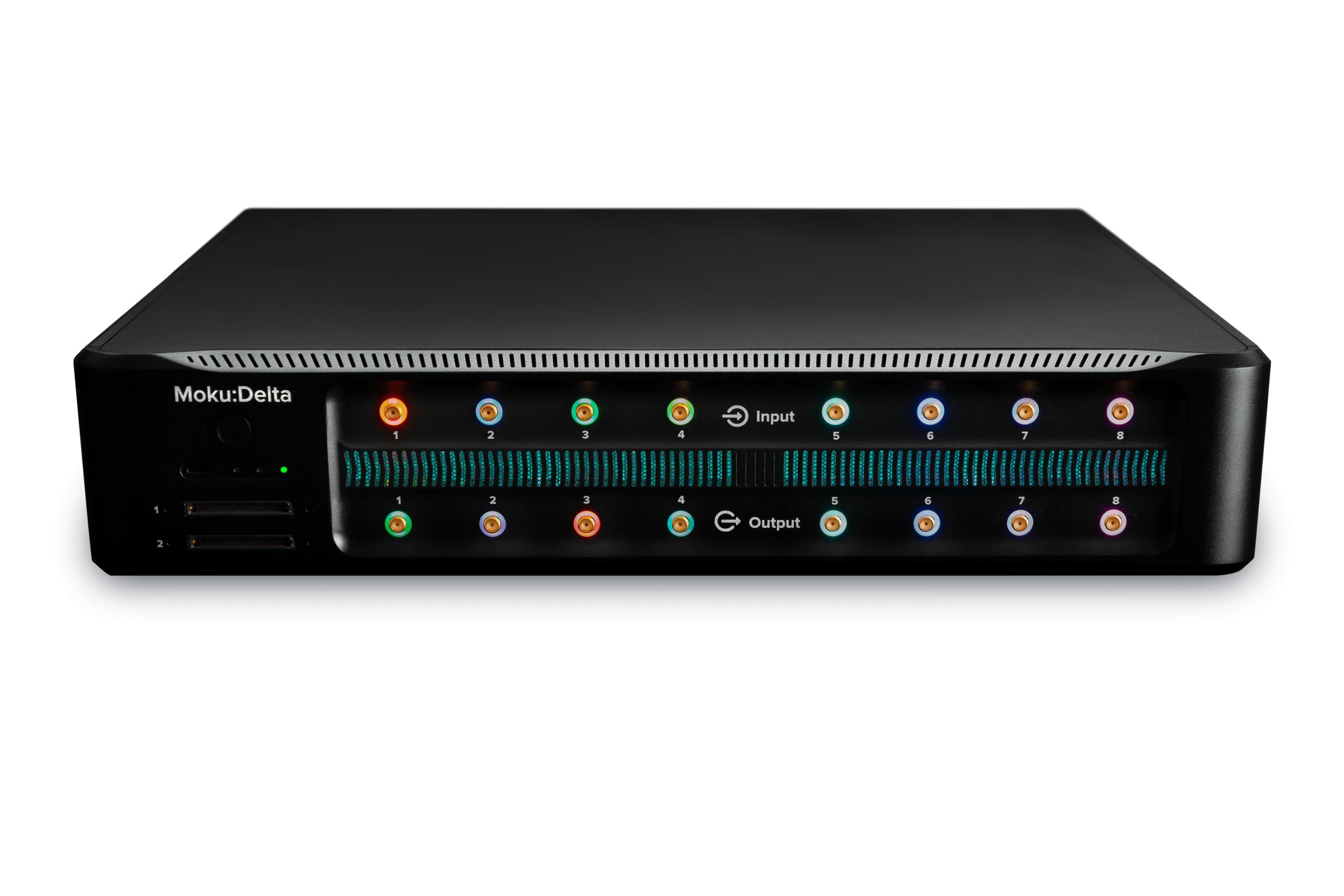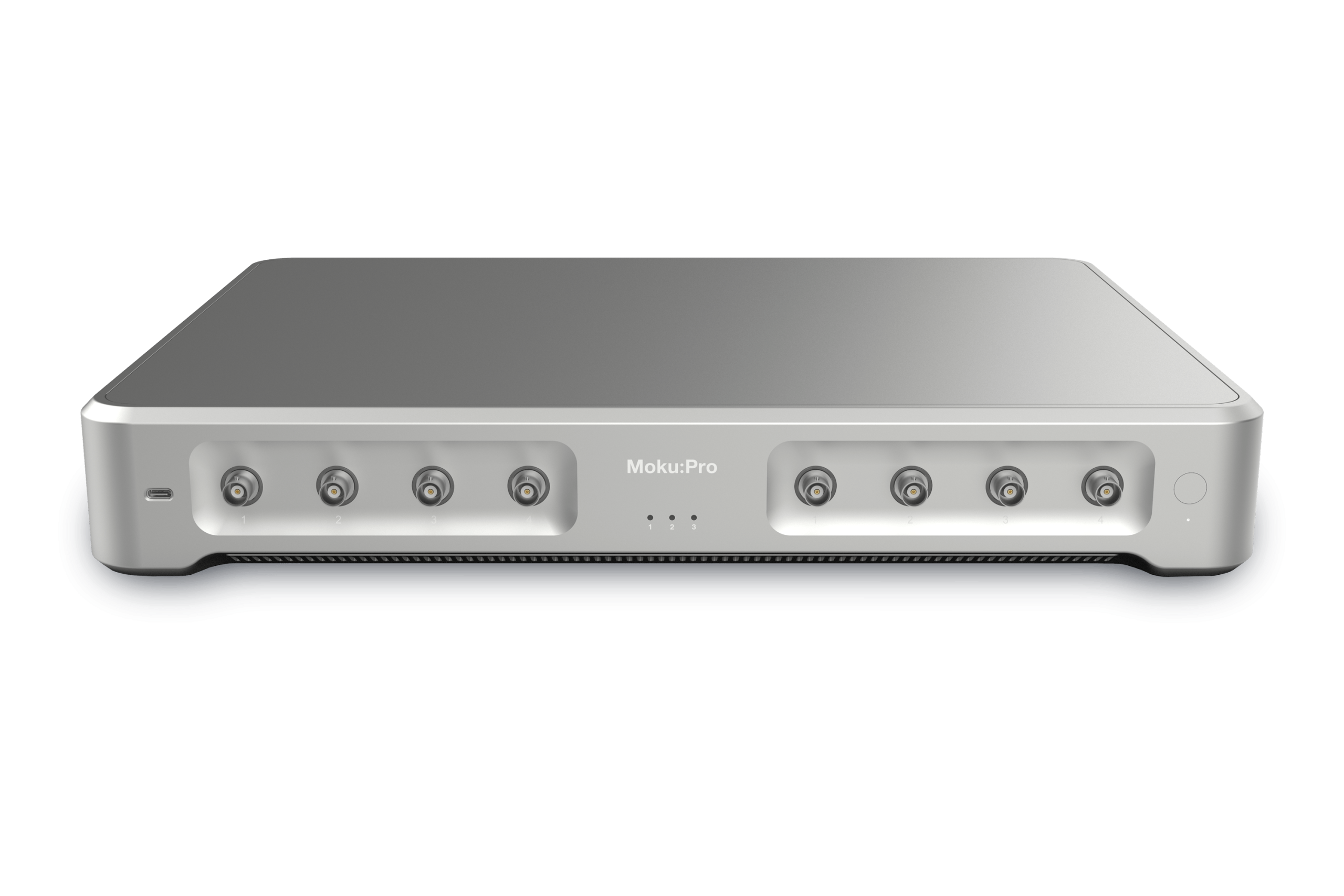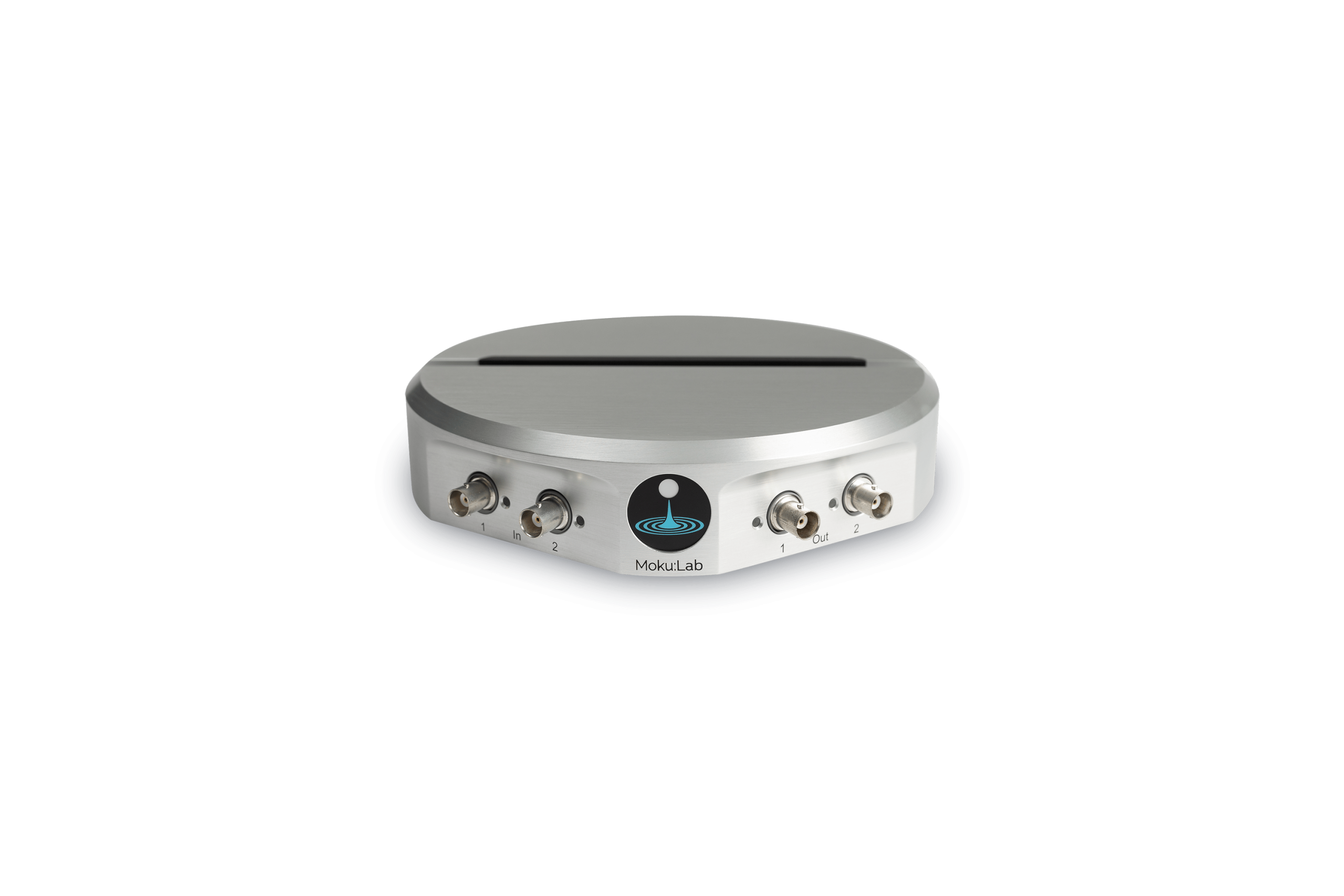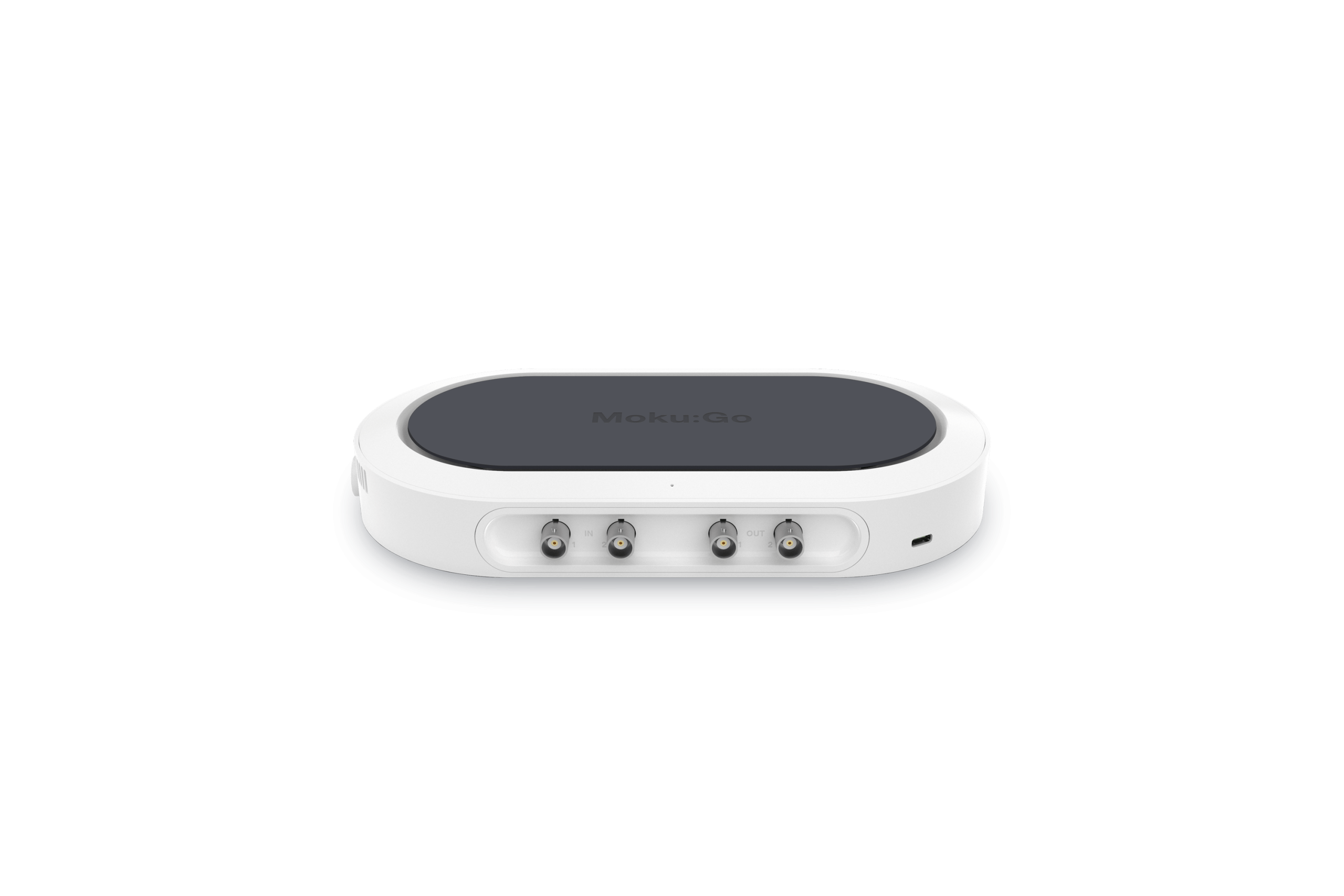Optical fibers, which act as waveguides through which light can be transmitted, have become ubiquitous in communications and biomedical applications as a cheap and efficient way to transmit information via light. However, like any other cables, fibers are subject to wear and tear and can introduce phase delays, distortion, and reflection into an optical system. Fibers must be calibrated, typically via a length measurement, so that their exact transport properties can be known. Despite the intense need for precise calibration of optical fibers, the process traditionally requires making significant sacrifices in cost or precision.
To combat this issue, researchers in the group of Professor Xavier Attendu at Amsterdam UMC in the Netherlands have developed an efficient, low-cost method for characterizing the length of optical fibers; their results are available in Optics Letters[1]. To accomplish this, they integrated Moku:Lab among their other electronics and deployed the Moku Phasemeter instrument to create a plug-and-play fiber measurement system that reduces cost and complexity when compared to other commercial systems.
Moku:Lab is a reconfigurable hardware platform that combines the digital signal processing power of an FPGA with versatile, low-noise analog inputs and outputs. The software-defined functionality enables Moku:Lab to provide a full suite of test and measurement instruments. With Multi-Instrument Mode, users can combine pairs of instruments to run simultaneously with lossless interconnection.
The challenge
Two general methods currently exist for fiber length measurement, each with distinct advantages. One method, optical time-domain reflectometry (OTDR), involves sending a series of optical pulses through the fiber under test (FUT) and measuring the strength of the reflection as a function of time. Commercial OTDR instruments can be cost-effective and efficient for measuring long distances, but their precision is limited to the order of centimeters.
A second technique, called optical frequency-domain reflectometry (OFDR), uses a swept light source and an interferometer to greatly improve the time resolution of the collected data. Commercial OFDR setups are costly and time-consuming to set up but can be incredibly useful for short-range optical networks such as photonic chips.
Unfortunately, while both OFDR and OTDR have strong use cases, neither of these solutions are ideal for a typical optical laboratory, where optical fibers can range between a few centimeters and tens of meters. In this range, OTDR does not provide the sub-mm accuracy needed, whereas OFDR setups can be overly complicated for the types of measurement needed. For this reason, the group at Amsterdam UMC wanted to develop a precise, simple method for characterizing optical fibers in their range of interest.
The solution
The group’s fiber measurement system is conceptually similar to an OFDR setup. An arbitrary waveform generator (AWG) modulates a carrier wave with RF frequencies, sweeping from 10 to 110 MHz over a period of two minutes. Next, a 50/50 fiber coupler divides power between the two arms of the interferometer, as shown in Figure 1. The lower arm acts as a reference, while the fiber under test (FUT) occupies the second arm. Both arms are monitored by photodiodes (PDs), which provide feedback directly to the Moku Phasemeter.
In contrast to both OFDR and OTDR techniques, this setup measures the transmission through the FUT, which introduces a time delay into its arm of the beam path. This time delay then manifests as a phase difference between the periodic signals collected by the PDs. The Moku Phasemeter monitors the frequency and phase of the incoming signals and calculates the phase difference between them. Making use of the self-correcting phase-locked loops (PLLs) on the Phasemeter input, the Moku tracks changes over the entire modulation frequency range, monitoring the phase difference with microradian accuracy. This unique feature of Moku allows the entire measurement sequence to execute in two minutes, without needing to continuously adjust the local oscillator.
The group controls the system and collects data with the Moku Python API for full automation, with the recorded phase difference directly reported to the measurement PC. Graduate student Robin van Zutphen, the lead author on the group’s paper, credits the results to the Moku platform’s ability to integrate seamlessly with the rest of the setup:
“Moku is easy to operate, relatively inexpensive, and it does its job well,” he said.
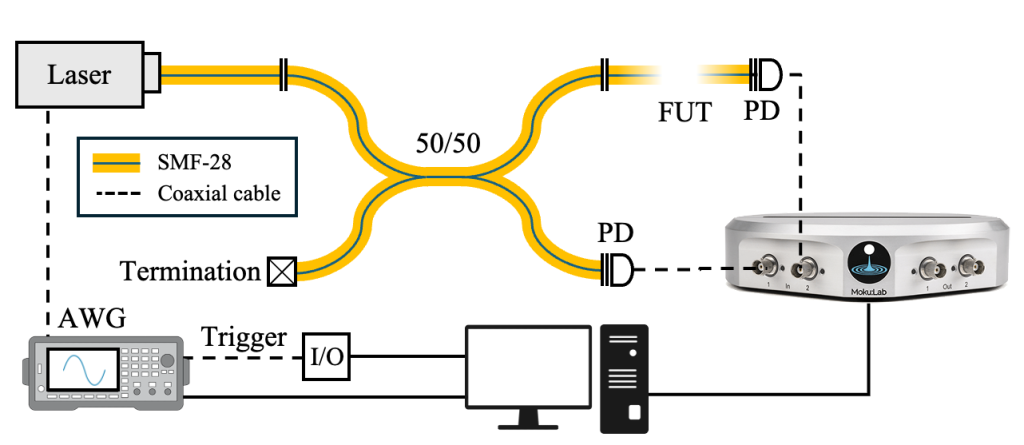
Figure 1: Experimental setup. An arbitrary waveform generator (AWG) provides RF intensity modulation for the laser, which passes through an interferometer. The FUT then introduces a phase delay that is recorded by the Moku:Lab Phasemeter. The setup is monitored and synchronized by a host PC.
The result
After data collection, some post-processing is necessary to remove nonlinearities and other frequency-dependent behaviors that are often introduced into the experiment. After correction, the phase difference of the fiber is plotted as a function of modulation frequency. The delay time, tFUT, is extracted from the slope of this plot, which is then converted to the length of the fiber.
To test the stability and repeatability of the system, the group measured a single fiber over the course of a 20-hour period. Variations in temperature can affect the stability of the laser systems, alter the refractive index of the fiber, and induce thermal expansion. Even with these diurnal temperature fluctuations, the standard deviation of the measurements was low (approximately hundreds of 𝜇m). Furthermore, the length characterization remained accurate over their range of interest, between 0.2 and 1.8m, as shown in Figure 2. With a low RMS error, the system can measure the length of these short fibers with precision (<1 mm), providing a cheap and precise alternative to other methods.
Having demonstrated a simple and cost-effective method for precisely characterizing fiber length, the group also incorporated other Moku hardware. They found that Moku:Go worked well within its smaller frequency range, with an error of ~750 𝜇m on a 2 m fiber. Moku:Pro performed much faster measurements (5 s) due to the increased speed of the FPGA, as the phase-locked loop bandwidth is much higher. The group said that this increase in speed helped mitigate environmental effects which could be introduced into the experiment during the longer 2-minute measurement period.
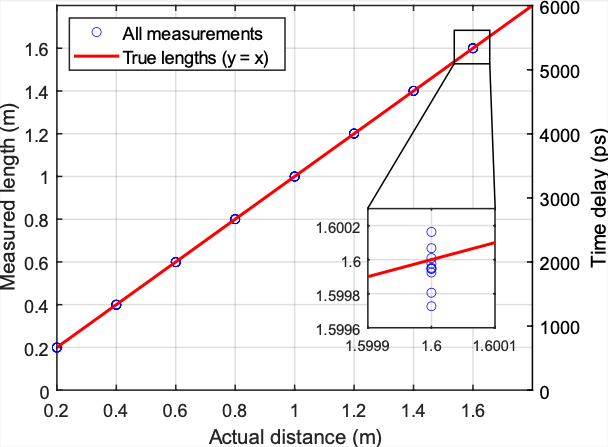
Figure 2: Measured vs. nominal length, showing the low error in the distance measurements. Inset shows the spread for repeated measurements of a given length.
Questions?
Get answers to FAQs in our Knowledge Base
If you have a question about a device feature or instrument function, check out our extensive Knowledge Base to find the answers you’re looking for. You can also quickly see popular articles and refine your search by product or topic.
Join our User Forum to stay connected
Want to request a new feature? Have a support tip to share? From use case examples to new feature announcements and more, the User Forum is your one-stop shop for product updates, as well as connection to Liquid Instruments and our global user community.
References
[1] Robin van Zutphen, Paul R. Bloemen, Ton G. van Leeuwen, and Xavier Attendu, “Simple and cost-effective method to measure the length of optical fibers,” Opt. Lett. 50, 329-332 (2025).
